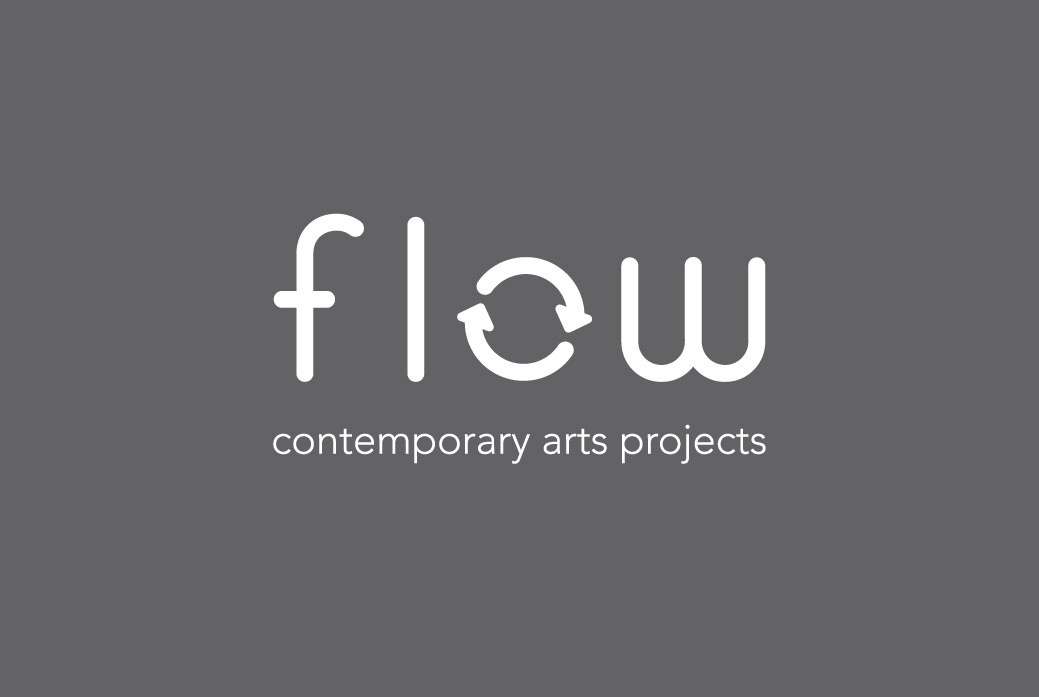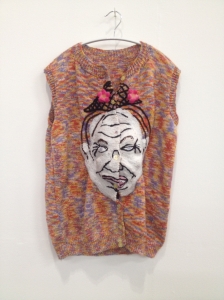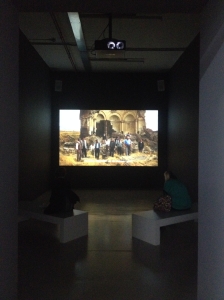Good to see Bloomberg at Spike Island – fresh ideas and works that reflect what’s happening in our art colleges today. My overall response is mixed – the show almost divides into two distinct camps, one which I enjoy more than the other. The camps are primarily the physical, material presence of the objects/sculptures, (which appear to be rather similar in their nature and concept) and the other lens-based media. An overriding memory of both camps is one of a light, enquiring humour, often ironic.
The physical-object works were mostly a little bit messy, a little bit playful, and some no doubt intellectually fascinating concepts, if I could see them. Some are lost on me. What wasn’t lost on me was smell – the show as a whole hammered my senses into action – joss sticks burning, pepper and mustard used as a painting medium, video soundtracks overlaying each other, permeating the spaces.
The works in the object group that grabbed my attention the most are definitely the knitted portraits on the jumpers by Hardeep Pandhal. The strange, knitted protrusions that were literally attached to the jumpers, neither 2D or 3D, were head portraits of Tupac Shakur and Bruce Parry. At first sight, my mind immediately drew parallel to something in the news at present – that of the Chinese man who has had a new nose grown on his forehead.
The mans face hosting his nose, but in a different place to usual, is not unlike a sweater hosting a face that would normally be seen above the sweater, as opposed to attached to it. Facial slippage and misalignment. I understood the reference to 2pac in the title of one of the garments, but had to do a bit of home research to find out about Bruce Parry. Apparently he is a tv presenter on a programme about Tribes. I’m still wondering what is going on there, can anyone help me out?
Another work that haunts me is the short film, ‘Blessed are you who come’ by Fatma Bucak. It was both beautiful and intriguing. Subtitled a ‘Conversation on the Turkish Armenian border 2012’, visually it drew me in. The colours are rich, the rugged landscape framing the ancient ruined architecture, maybe from the Ottoman empire (my knowledge of this history is sketchy) provided a filmic stage for the ‘performers’. A group of about 12 or 15 old men (apart from one child that was probably a great grandson), probably 70+ years old, mostly having walking sticks, stand as a group as if posed for a photo, looking forward at the camera, which is static. The subtitles reveal that they have been asked to behave like this “by the Italian”. The narrative is revealed by the comments the men make about why they are there, what brought them there, and snarky little cultural digs, all with humour but clearly very loaded. Whilst these men are not consciously performing, a barefoot woman dressed in a black is – she has a dramatic presence as she moves between them, they mutter about her when she passes, but do not follow her with their eyes, they do their best to keep looking forward at the camera. One or two get a bit irritated, clearly baffled as to why they have been asked to stand there. I empathise. And like them, I am curious enough to stay and watch this film play out. I wonder why, what historical references do I not know about? Are these men veterans of a battle between Turkey and Armenia? The woman shares bread them, but it is Ramadan, the men don’t eat it. So we know they are Muslims. And of course there is the biblical breaking of bread. And maybe she is Muslim too – she prostrates herself, but doesn’t wear a veil, though her hair hides her face. She is timeless in appearance. This work was powerful in many ways and even as I write this, I realise I need to know more. Or maybe I don’t. I watched it three times, it held my attention and I felt both inquisitive about it and charmed by its visual presence.
There were two other works that stay with me. The documentary styled film, ‘Purleus Tales’ by Simon Senn and the photographs by Joanna Piotrowska. Senn’s film challenges both the artist (camera person) and the viewer with the same dilemma – is it appropriate to use documentary film to frame people and provoke and challenge the subjects? It highlights the ethics of that approach, is it an inhumane manner to get the material needed?
Piotrowska provides a wonderful, aesthetic experience – huge black and white photos, mostly of pairs of people, that use clothes as binding signifiers, merging like conjoined twins. Brilliant.


